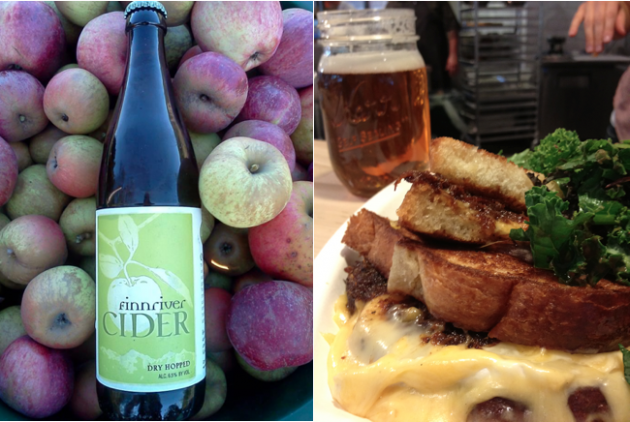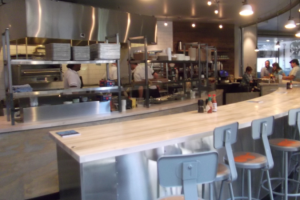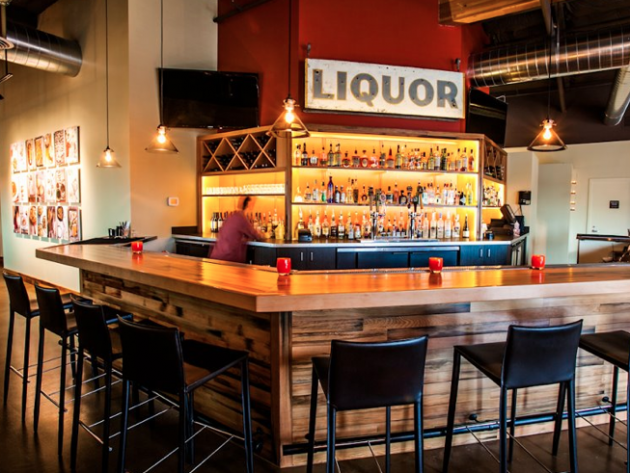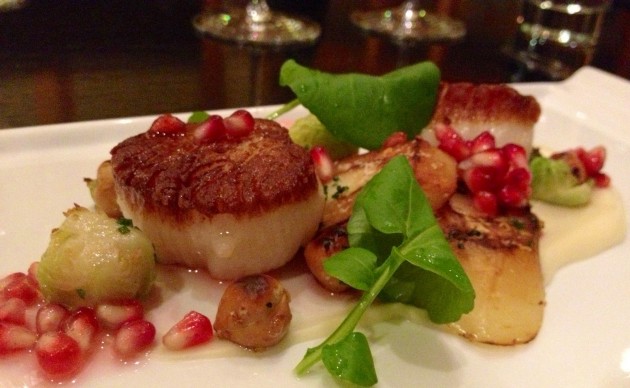Eating and drinking is a completely subjective encounter and should be based upon personal preference alone. However, Erin Thomas likes to eat, drink and share her opinion on finding your epicurean zen in Seattle-area dining.
Plastic surgery for a Seattle landmark helps tourism and the city’s culinary expansion.
After 50 years of titanic tourism use and abuse, annual foot-races, concerts and sporting events, the Seattle Center was in need of a facelift. Like any modest lady, she took her body work one subtle piece at a time – a paint touch-up and outdoor art structure addition here, a complete overhaul of the Armory Center House there.
Originally built in 1939, the Center House held the 146th Field Artillery and in 1962 with Seattle’s hosting of the World’s Fair, the Armory was upgraded into the first vertical and indoor shopping mall, titled “The Food Circus.”
Now, with the Center making monumental steps toward modernizing itself with its city, the Armory is paying its respect and homage to its origin by welcoming the area’s foodie notions onto its historic grounds. What once was a downcast and stark food court is now a beacon of hope for cuisine, both for tourists and locals.
Although the shopping mall mainstays still do reside (i.e. Subway, Starbucks, dual pizza stops), Seattle chefs have made their presence known with pop-up versions of their flagship restaurants, including Pike Place Market’s Confectional, Fremont’s Pie, MOD Pizza, local nut roaster Ceres and most excitably for this eater, Skillet Counter.
Location: Skillet Counter — Pimping a menu reminiscent of both the roving street truck and diner on Capitol Hill, the grub of Skillet Counter is made-to-order, served up with a few local draft beer basics (Maritime, Two Beers, Manny’s) or keg wine selections (Proletariat) and physically on rustic wood counters reclaimed out of Port Townsend.
Pulling several chefs from the truck and the brick and mortar restaurant, Counter general manager Cara Castrale said owner/chef Josh Henderson strove to keep the Skillet vibe and respect to their original airstream kitchen in regards to the design, decor and menu. “We really want our team immersed in the culture of Skillet,” Castrale said. “We want to keep the brand recognition of really good street and diner food.”
Henderson is said to be the driving force on why many of the Seattle businesses signed up for their slots in the armory in the first place. As a shaker and a mover, rumor also has it that Woodinville is home to the next addition of Henderson’s Skillet entourage.
Eating: The Ultimate Grilled Cheese ($9) — An archetype in the diner world, this is a grilled cheese that could change one’s religion. Honestly, God must exist to have created this sandwich. Vegans could change their whole dietary philosophy because of it. Brie, cheddar and American cheese are liberally slathered between two beautiful slices of thick-cut brioche and served alongside hand-cut fries (that can be substituted for poutine — why the hell not!) or a mixed green salad that boasts kale and other modish greenery. The experience is taken one step further with add-ons like a fried chicken thigh ($5) or the must-do of the Skillet branded bacon jam ($2).
Drinking: Cider — Although all ciders are not produced from apples, it’s a no-brainer for Washington to make great ciders, from the use of our official state fruit (duh, apple). Pears, blackberry, currants and more are also popular fruit choices to ferment. From bitter to sweet, sparkling to still, cider is on the rise in the Northwest with production having increased 28% in the past year, according to the Northwest Cider Association. Similar to wine production, the fruit juice is pressed, fermented and often ready to consume within three months. Depending on the flavor profile and desired level of sweetness by the producer, ciders ’round these parts tend to air on the dryer side, making them a perfect partner for cheese — particularly the unctuous and mildly sweet brie. Remember how delicious apple slices and cheese (regardless of the variety) were as a kid? Think of this in a more hedonistic, alcoholic manner and you’ve got it. Bright acid to counter the brash fatty flavors of robust cheeses.
The Specifics: Finnriver Cidery Dry Hopped Cider ($8 for 500ml bottle) — A family-ran-and-owned farm, Finnriver was founded and named after the two sons (Finnegan and River) of the family in 2004 in Chimacum, Wa. Known for pushing the envelope with Washington’s official fruit through sparkling ciders and other flavors, Finnriver decided to extend their consumer base by offering a cider comparable to a beer. The dry-hopped cider is bright and tangy with citrus from the use of organic Cascade hops. Semi-sweet with the fruitiness of apple and coming out at 6.5% alcohol, the hops bring around the citrus and floral flavors and aromas.







